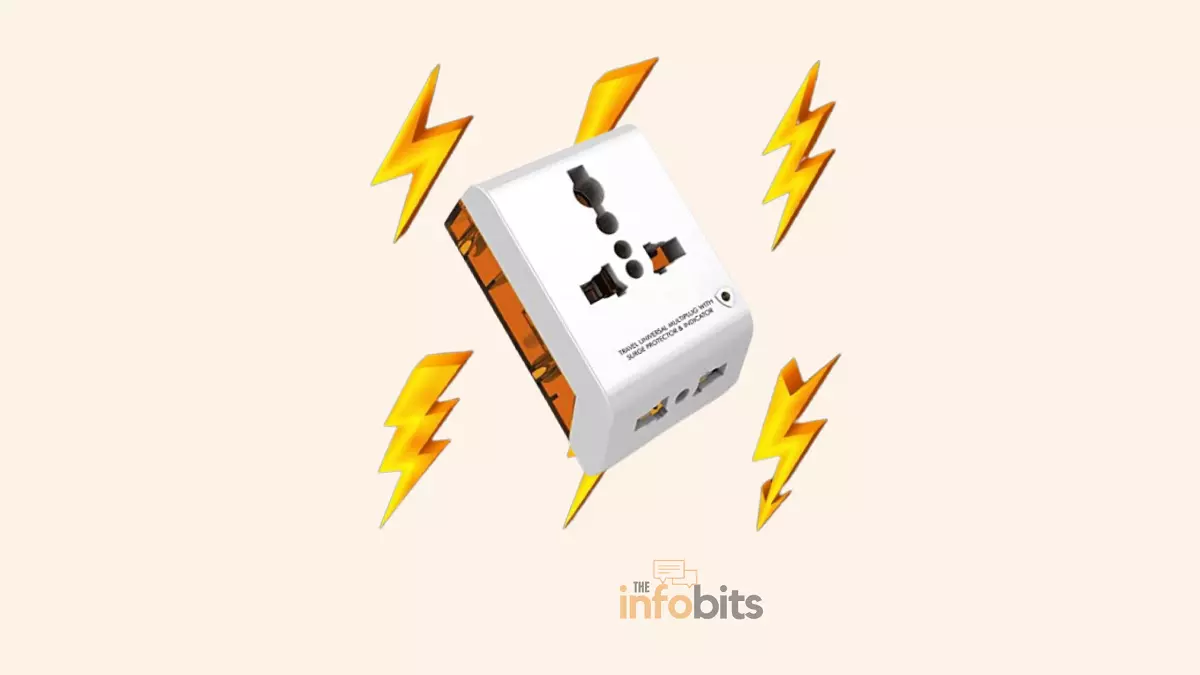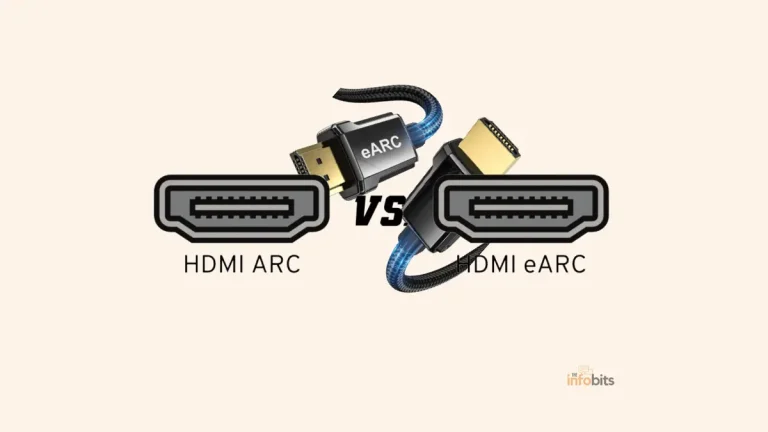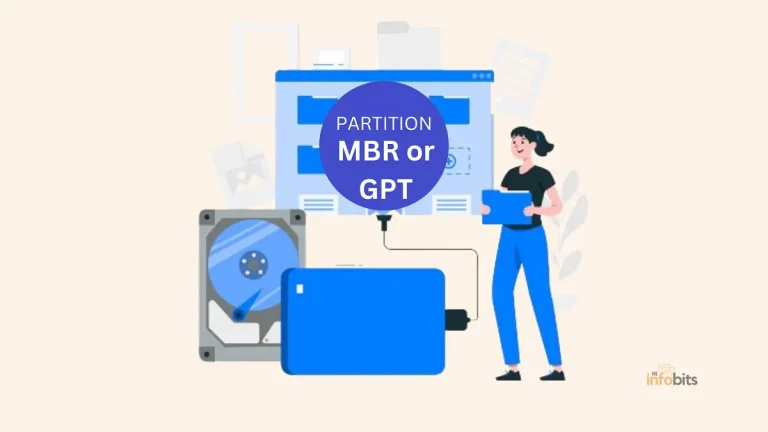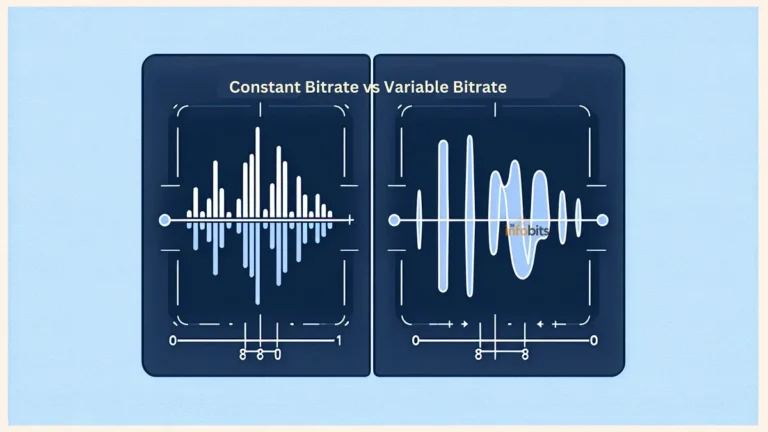How to Choose Surge Protector For Home Electronic Devices?
A surge protector is required to protect your most valuable household equipment from being damaged by a disruption in your home’s electric voltage.
If you don’t have a surge protector, a power surge could wipe out important data on your PC or damage your device even.
Several outlets are required in a power home for many electronic devices.
You’ll need an outlet for the monitor, CPU, speakers, wireless router, modem, printer, and any other devices you want to connect to a basic desktop computer.
These devices should be protected from unintentional power surges or spikes by using a Surge Protection Device (SPD).
What is a Power Surge?
When an electrical current is interrupted and then resumed, there is a brief increase in supply voltage known as a power surge. A power surge means a momentary hike in electrical energy.
Voltage is a measurement of electric potential energy, specifically, the differential in electric potential energy. A surge occurs when the voltage rises beyond the normal level for at least 3 nanoseconds.
A power surge can range in voltage from five to ten volts to thousands of volts.
Low-magnitude surges may occur when we regulate home appliances, and high-magnitude surges may occur during lightning strikes.
Power surges are classified as either internal or external.
Internal Power Surges
The majority of household power spikes are caused by internal power surges. Internal power surges occur dozens of times per day and go mostly unnoticed.
This type of surge occurs when motors start or stop, or when power is turned on or off in appliances such as air conditioners and refrigerators.
External Power Surges
External power surges are surges that occur outside of the home. A damaged power line, a lightning strike on utility equipment, or a blown transformer can all cause an external power surge.
Electrical surges may and do occur as a result of lightning, although it is not as prevalent as other reasons. Purchasing a surge protector to safeguard your gadgets from a thunderstorm may not be in your best interests.
While strong surge protectors may withstand a surge created by a distant thunderstorm, a close or direct strike from a lightning bolt will destroy it. As a result, unplugging your equipment is the greatest way to protect yourself against thunderstorms.
Internal and external power surges can both harm electronic devices in your home.
A significant voltage fluctuation has the potential to destroy any device that contains a microprocessor.
A minor voltage surge will not cause your equipment to burn or cause obvious damage, but it will cause electronic rusting.
Surge protectors are required to keep the internal microprocessors of your electronic devices from deteriorating.
Related: Does Fast Charging Reduce Battery Life? Realities
What Exactly Is a Surge Protector?
Surge protectors are protective devices intended to protect electronic devices from surges or spikes in power. Surge protectors prevent surges from reaching downstream devices connected to the surge protector.
Surge protectors work by redirecting excess energy to the grounding port of a wall outlet. They absorb excess voltage in metal oxide varistors, which safely route it to the ground line and protect your electronics.
The surge protector’s sole function is to detect excess voltage and reroute it into the grounding wire. This is why all surge protectors contain a grounding pin (the third prong on a plug) and must be plugged into a properly grounded outlet to function correctly.
Without this function, the excess voltage would be distributed across all connected power cords, potentially causing permanent damage to the equipment.
Excess voltage can be obvious, as when a light bulb blinks out, or it can be subtle, gradually damaging circuitry over time. Complex gaming setups with sophisticated microprocessors may experience terminal failure if power surges or spikes are permitted.
A lightning strike is a severe case of a high-voltage surge. However, electrical surges and spikes are more likely to occur when the local utility provider switches power grids or has equipment failures. Even though they make every effort to ensure a constant flow of energy, this is not always possible.
Excess voltage is most common when there is a change in energy demand, especially if the distribution network has outdated or faulty electrical regulating equipment.
Do you notice the lights flickering or dimming when you turn on the refrigerator, air conditioner, hairdryer, or any other power equipment?
Because of the high rate of energy consumption, the demanding circuit may experience a brief spike that affects all linked outlets.
Anything above the standard voltage of 120V in North America is regarded as excessive. Smaller surges can occur anytime and still exceed a product’s normal operating voltage.
How Does a Surge Protector Work?
A thunderstorm or a power outage can cause an electrical system surge in current or voltage. That massive electrical energy strikes your household items, which are not equipped to handle the surge, and can cause electrical items such as computers or smart TVs to short out.
A surge protector keeps excess energy from coming into contact with your devices by redirecting it back into the grounding wires or using other methods of dissipation to keep it from harming your home’s items.
What Devices Should Surge Protectors Be Connected To?
The most important item to connect to a surge protector is expensive electrical or electronic equipment with microprocessors.
Surge protectors should be used during a thunderstorm to protect desktop computers, laptops, televisions, gaming systems, and charging phones from damage. A power surge or spike can damage these devices or wipe out all of your data.
Surge protectors are not required for coffee makers or alarm clocks, although they appear to be important devices to have in your home. Surge protectors are beneficial to all devices, but only those with sensitive microprocessors are required to use them.
Surge Protector vs Power Strip
Surge protectors and power strips are frequently confused, yet they are two quite different technologies. It’s critical to understand the distinction since just one of them can safeguard your gadgets from a power surge!
In appearance, a power strip resembles a surge protector. Both allow you to connect a wide range of electronic devices.
However, the primary difference between a power strip and a surge protector is that the power strip lacks the surge protection functionality that the surge protector does.
A power strip plugs into a standard outlet and allows multiple devices to be connected to the same outlet. The sole purpose of a power strip is to act as an extension of your wall outlet. Power strips are extension cords with multiple plugs.
A power strip gives you the convenience of extra outlets without the added security of a surge protector. You can buy a power strip, but the safety of your equipment is not guaranteed when the next storm or spike hits.
A surge protector is similar to a power strip in that it protects electronic devices from power spikes and surges while also allowing more items to be connected to a single outlet. An extension cord surge protector, similar to power strips, is also available on the market.
Spikes and surges can be caused by lightning strikes, power outages, tripped circuit breakers, short circuits, and other factors.
While purchasing a surge protector or a power strip is the most common solution, there are some important distinctions to be made.
Surge protectors are frequently used as power strips, but power strips are not always equipped with surge protectors. They’re often found in the same hardware or supermarket aisle.
However, before making a purchase, you should be aware of the differences.
Related: How to Charge Your Phone Without a Charger?
How to Pick a Surge Protector?
Surge protectors come in a variety of shapes and sizes. Some surge protector outlets are built into the wall.
The majority of them include a cable that can range from one to twelve feet in length. When shopping for a surge protector, look for the following characteristics:
- There should be outlets for all of your electrical devices
- Should have enough spacing to accommodate more power bricks
- The wire is long enough to reach the wall socket
When you have ten devices to connect, a six-outlet surge protector isn’t going to help you out.
The last thing you want to do to make up the difference is chain link to another surge protector or power strip. This increases the risk of the electrical circuit being overloaded, voiding the warranty.
If you’re unsure, it’s better to overestimate rather than underestimate the number of outlets you’ll require.
Surge protectors aren’t all designed to protect power bricks. Certain power bricks are so large when plugged in that they may obstruct a free outlet (or two or three).
Even if your current equipment uses standard two-prong connections, a surge protector with specific outlets spaced apart is worthwhile to consider. You’ll be able to use all of them right away, but you’ll also be able to manage any future power bricks.
A surge protector is useless if it cannot reach the nearest wall socket. An extension cord can be used, but it does not provide complete protection and frequently voids the product warranty.
When in doubt, choose the surge protector with the longest power cord.
What to Look for in a Surge Protector?
To draw attention to the product, there may be a lot of writing and feature explanations on the product packaging.
An SPD buyer can understand the product details with all of the specifications and features, but it may be confusing. When purchasing a surge protection device, prioritize the following specific parameters:
1. Number of Outlets
Is it necessary to determine the number of devices that will be connected to a surge protector before purchasing it?
Will you need to charge your phone with this surge protector?
If this is the case, you should look for one with USB ports. When connecting multiple plugs, surge protectors with swivel outlets are also useful.
2. Joules
The energy absorption rating is indicated by the number of joules (a unit of measurement for energy) provided for the surge protector. The higher the joule rating for a surge protector, the better.
Consider it a shield that keeps you safe from harmful energy surges. Higher values imply that the surge protector can withstand more (or larger) impacts in single or multiple incidents before failing.
So, if a surge protector has a 500-joule protection rating, it could potentially absorb ten 50-joule impacts, four 125-joule strikes, two 250-joule strikes, or one 500-joule impact.
Small gadgets such as lights, radios, and battery chargers are safe with joule values under 1000.
You can use a surge protector for a refrigerator with an energy absorption rating of 1000 joules.
Heavy-duty surge protectors with joule values of 2500 or higher should be considered for computer or home theatre equipment.
After a certain period, your surge protector will need to be replaced. Every joule absorbed by your surge protector reduces the number of joules available in the future.
3. Clamping Voltage
The clamping voltage, also known as the Voltage Protection Rating (VPR) or Suppressed Voltage Rating (SVR), determines when the surge protector will activate to redirect the excess voltage to earth.
While joules appear to offer protection, clamping voltage (the maximum voltage allowed through) proves to be more beneficial. The lower the number, the less tolerant of the voltage level the surge protector is.
That is, an SPD with a lower clamping voltage responds faster than one with a higher clamping voltage.
When comparing a surge protector with a clamping voltage of 500 V to one with a clamping voltage of 1000 V, the latter will allow a larger surge or spike to form, potentially damaging electronic components before acting.
4. Response Time
A surge protector’s response time (usually measured in nanoseconds) determines how quickly it will react to reroute excess voltage.
While electronics appear to work quickly, they take time to operate. When the operating voltage equals the clamping voltage, the surge protector begins to respond.
As a result, the clamping voltage and response time are inextricably linked. Surge protectors with faster reaction times work faster, diverting excess power before it causes damage.
If you want the best results, choose ones with response times of one nanosecond (or less).
5. Manufacturing Standards
Underwriters Laboratories UL 1449 is the established safety standard for all Surge Protection Devices (SPD).
This standard specifies the certification criteria, design requirements, and product performance testing that manufacturers must meet for a surge protector to be considered safe for consumer use.
If this information is not prominently printed on the box of a surge protector, it may not be a wise choice for protecting your electronic device.
6. Replacement Indicator
Depending on the power surge protector, a light may flash to indicate that the joule threshold has been reached, indicating that the surge protector needs to be replaced.
Surge protectors have a finite lifespan based on how hard they are used. Even when a surge protector correctly diverts a surge, the protection itself might be damaged.
As a result, an indicator light is one of the most crucial elements. An indicator light will let you know if your surge protector is functioning properly. Is the indication light out of operation? It’s time to get a new surge protector.
Some surge protectors, however, do not have these lights, so check to see if the surge protector that intrigued your attention can indicate whether it’s time for a replacement.
7. Additional Features for a Surge Protector
Many surge protectors include several extra features. They are desirable, but they may raise the purchase price. More expensive does not always imply higher quality.
It is up to the customer to determine whether or not these features are worthwhile. Prioritize needs first, and keep in mind the previously mentioned performance evaluations.
Some surge protectors must have additional features such as whole-house surge protection, LED display, UPS provision, RF remote control, built-in overload protection circuit breaker, and so on.
8. Warranty
Surge protectors, like other consumer goods, are backed by a manufacturer’s warranty that covers connected equipment up to a certain monetary value (which varies from product to product). You should never need it, but it’s always better to be safe than sorry.
Make sure you thoroughly read the warranty coverage-related details. In some cases, the surge protector, any equipment connected to the surge protector (even if not damaged), and original invoices must all be acknowledged.
Before you see a single penny, there are usually plenty of exclusions, restrictions, and limits that must be met, and full reimbursement is never guaranteed. Expect claims to be processed in three months or more.
Related: Why Cell Phone Blows Up and How Can Prevent It?
Other Important Things to Consider
A surge protector must be plugged into an electrical socket that is properly grounded. The use of a three-to-two-prong adaptor is not permitted. Otherwise, it will be unable to protect against surges as effectively as it should.
Don’t daisy chain surge protectors with other surge protectors, power strips, or UPSs for extra outlets. You run the risk of overloading your home’s electrical circuits, causing a fire, or voiding the surge protector’s warranty.
The amount of joules is not everything. Take care to account for both the clamping voltage and the reaction time.
Surge protectors deteriorate with time and do not always indicate when they need to be replaced. There is no hard and fast rule, except that replacing old surge protectors after they have served their purpose is a good idea.
Especially when there have been severe power fluctuations, blown transformers, or lightning strikes in your area.
Instead of an in-wall surge protector outlet, a plugin-type surge protector or extension cord surge protector is preferable. It is difficult to replace an in-wall surge protector without the assistance of an electrician.
Do You Need a Surge Protector?
Are you still debating the need for a surge protector?
A surge protector is not required for a desk lamp or a standing fan but for expensive equipment with complicated microprocessors, such as computers, TVs, stereo systems, and media centers. In brief, a surge protector is beneficial to everything electronic and pricey.
A single power outage or surge can destroy your computer, home theatre system, or even your smart TV, so invest in a surge protector for peace of mind and to keep your home devices safe.
If your residential equipment is still operational after the next lightning strike, you will be grateful.
Final words
Be prepared if lightning strikes. Power surges can damage your expensive equipment. Electrical surges occur on all electrical networks, with some experiencing more than others.
Surges may harm electronics, thus surge protectors are designed to keep them under control as much as possible.
Surge protectors are a low-cost insurance policy for your most expensive household electronics. Surge protectors are probably less expensive than a new flat screen or Xbox.
Surge protectors are simple to purchase and install, but annual electrical outlet checks are required to avoid long-term, more serious issues.
You can safeguard the safety and lifespan of your home electronic gadgets by picking the appropriate surge protector.
Remember to assess your devices’ power requirements, take into account elements such as joule rating and features, and correctly install and maintain your surge protectors.
Investing in a dependable surge protector is a wise move that might potentially save you from costly power surge damage.
With the information in this article, you should be able to make an informed decision and secure your important electronic equipment for many years to come.
Frequently Asked Questions
Can you plug a surge protector into a surge protector?
No. Connecting a surge protector to another SPD may affect the working accuracy of both devices, resulting in less-than-optimal results. Furthermore, it will void the device’s warranty.
How many joules of surge protectors do I need for a computer?
Surge protectors with joule values of 2500 or higher should be considered for computer or home theatre equipment. On average most people are using computer surge protectors having a rating of 2000 joules.
Do 2-prong surge protectors work?
A surge protector must be connected to the ground connection in the wall power outlet to function properly. As a result, two-prong surge protectors are useless if they are not properly grounded.
What is a good joules rating for a surge protector?
With joule values under 1000, small electronic devices such as lights, radios, and battery chargers are safe. Surge protectors with joule values of 2500 or higher should be considered for computer or home theatre equipment. So, for a standard surge protector for home use, a 1000 to 2500 joule rating is preferable.
How long does the surge protector last?
A surge protector’s lifespan is determined by its joule rating and frequency of operation. If you live in an area with few power surges, most surge protectors will last three to five years.
How many joules of surge protectors can be used for TV?
A surge protector with a joule rating of 1000 to 1500 joules can be used to protect a normal LED TV. But a 2000 joule surge protector is preferable.
Are surge protectors the same as power strips?
Surge protectors and power strips are not convertible or equivalent. While both devices have many outlets, a surge protector has built-in protective features to keep your electrical gadgets safe from power surges. Power strips, on the other hand, provide no surge protection and should not be used to safeguard sensitive gadgets.
Can I use one surge protector for all my electronic devices?
Multiple surge protectors are normally suggested for your electrical gadgets. Different devices demand different amounts of power, and utilizing a single surge protector for all devices could overburden it and negatively impact the effectiveness of the device. Assess your gadgets’ power requirements and distribute them among many surge protectors for maximum protection.
How often should I replace my surge protector?
Surge protectors are not meant to survive indefinitely. Internal components deteriorate with time, limiting their capacity to offer effective protection. It is advised that you replace your surge protector every 2-3 years, or sooner if it has been subjected to a major power surge or shows symptoms of wear and tear.
Can surge protectors protect against lightning strikes?
While surge protectors protect against most power surges, they may not provide complete protection against direct lightning strikes. To defend against lightning, extra lightning protection systems should be installed, and sensitive electronics should be unplugged during severe thunderstorms.
We hope you found this post informative, and do like and follow us on Facebook and Twitter for regular updates.
We also ask that you bookmark this page for future reference. Sign up for our free newsletter as well to receive fresh information immediately in your inbox and keep technically up to date.








Excellent! Best of a dozen sites I looked at. Just wish I could have printed off document.
Thank you for your encouraging words.